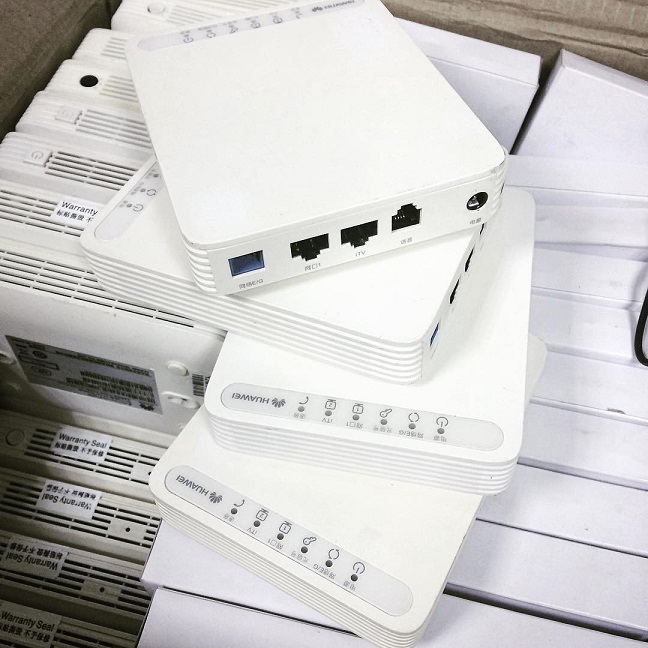On the test, I wrote the profiles and added ONT Huawei EchoLife HG8110 to Huawei SmartAX MA5683T.
The first step is to connect to the Huawei SmartAX MA5683T and go into configuration mode:
enable config
Create ont-srvprofile:
ont-srvprofile gpon profile-id 14 profile-name "Huawei HG8110" ont-port pots 1 eth 1 port vlan eth 1 translation 228 user-vlan 228 commit
Create ont-lineprofile:
ont-lineprofile gpon profile-id 14 profile-name "Huawei HG8110" tcont 4 dba-profile-id 11 gem add 1 eth tcont 4 gem mapping 1 0 vlan 228 commit
We learn the serial number of ONT and the number of the card to which it is connected by typing the command to search for new ONTs:
display ont autofind all
Let’s go into the setup mode of the desired Gpon card (in the port of which the ONT is connected):
interface gpon 0/5
Now add ONT with the serial number:
ont add 3 17 sn-auth "414C434CF23D5EAF" omci ont-lineprofile-id 14 ont-srvprofile-id 14 desc OPISANIE ont port native-vlan 3 17 eth 1 vlan 228 priority 0
Where number 3 indicates the Gpon port number to which the ONT is connected.
The number 17 means ID ONT and is listed next in order after added in the ONT configuration, the list of occupied IDs can be seen after exiting the Gpon card setup mode and typing the command displaying the entire configuration (for each gpon port, their IDs ONT):
display current-configuration display current-configuration | include service-port
Let’s exit the Gpon interface configuration mode:
quit
Add a service port that will give the Internet to ONT (the number 425 denotes the port service number and is taken from the free in the configuration):
service-port 425 vlan 228 gpon 0/5/3 ont 17 gemport 1 multi-service user-vlan 228
Save the configuration:
save
The standard IP address of Huawei EchoLife HG8110 is 192.168.100.1, the login is telecomadmin, the password is admintelecom.
In ONT, you do not need to configure anything.
See also:
Configuring Huawei SmartAX MA5683T through the console
